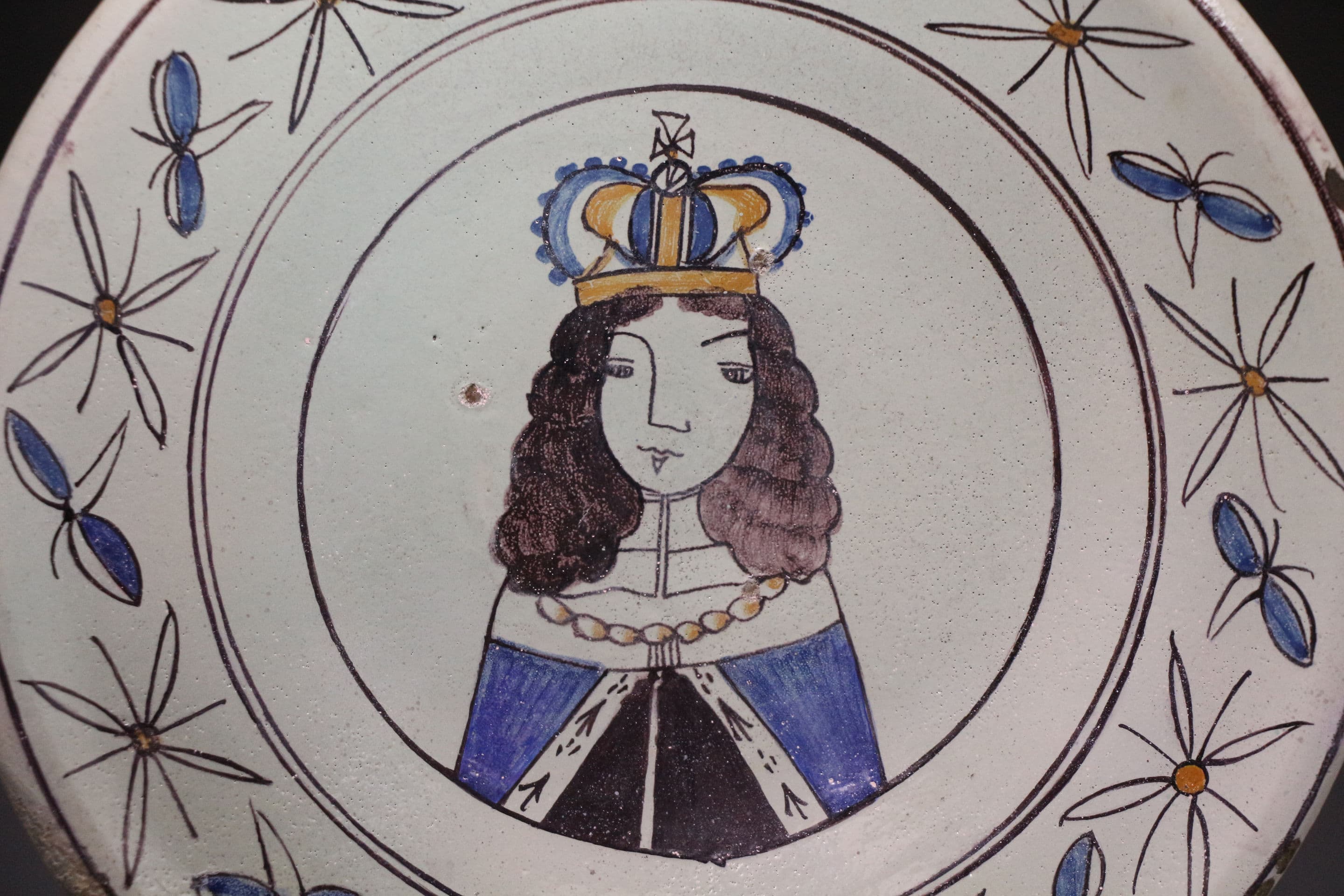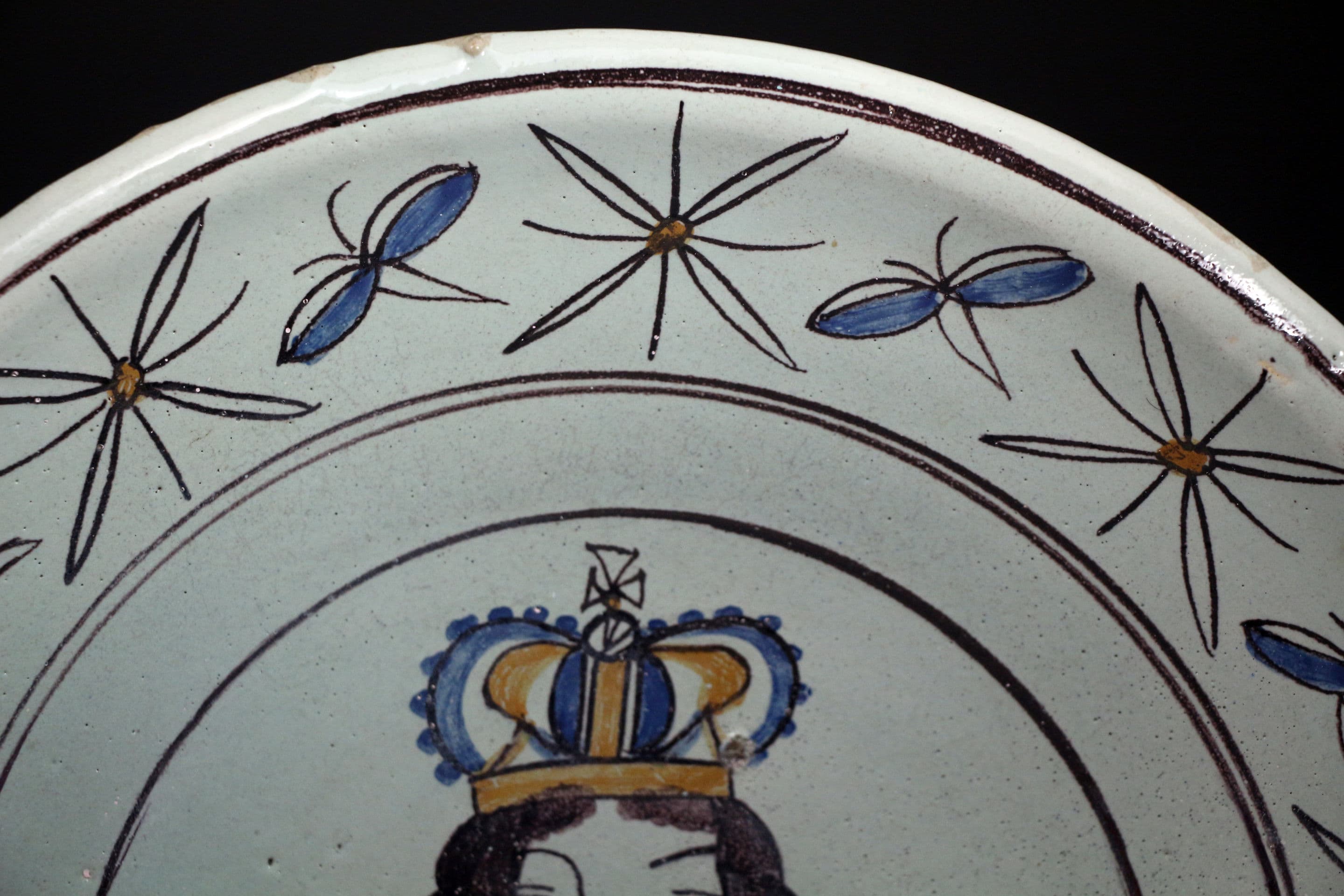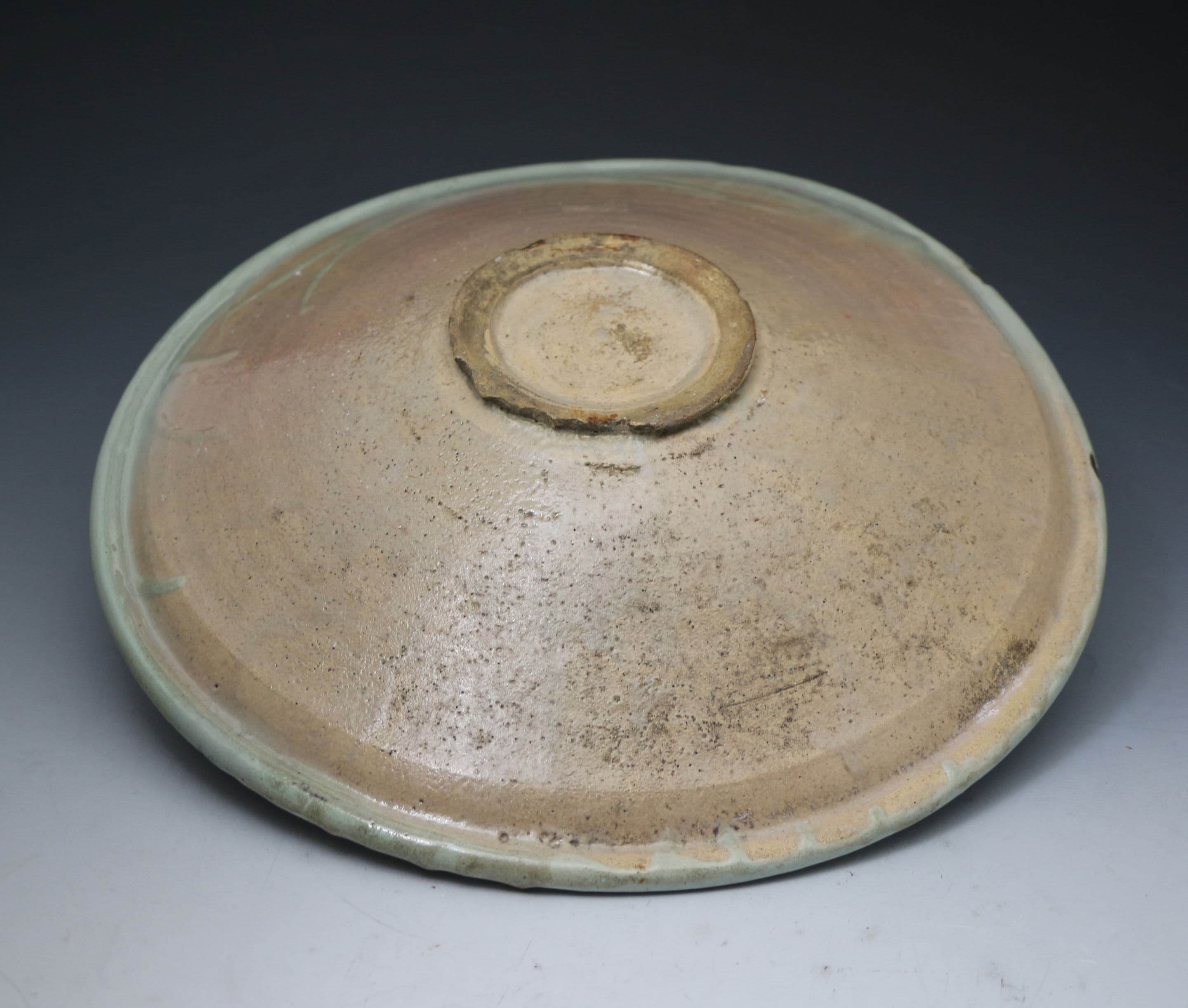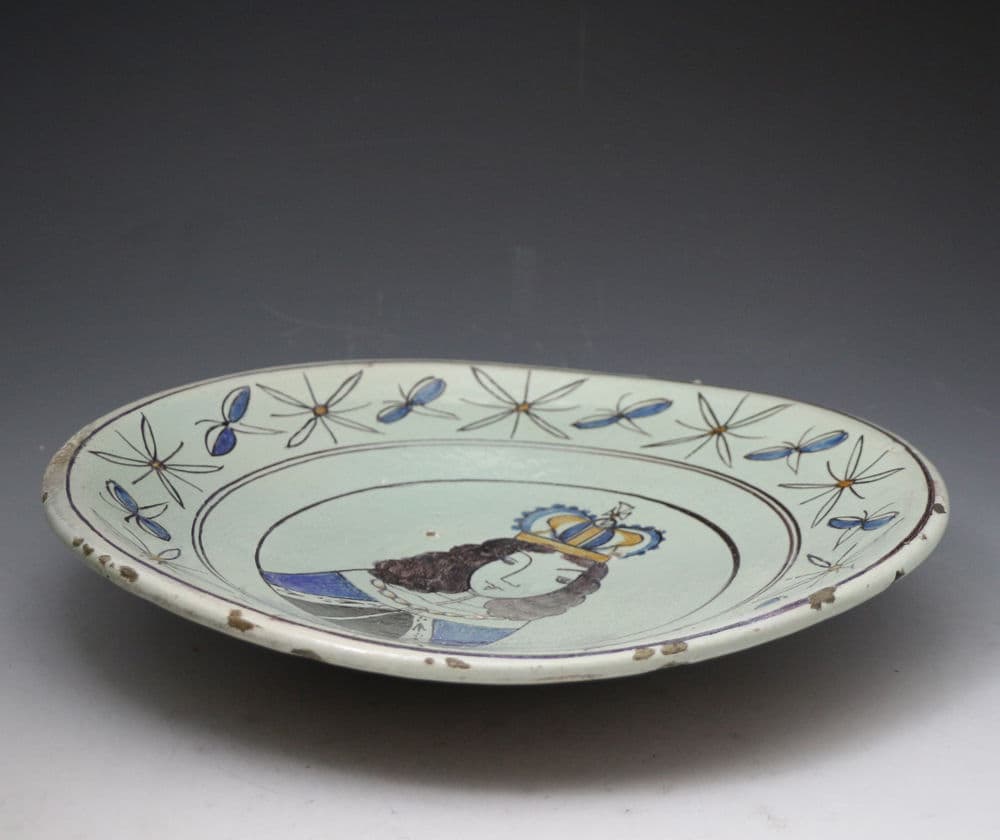Description
An exceptionally rare delftware charger with a bust portrait of King James 11,portraits of this monarch are very rare on English delftware. The insect and flower border is of a similar type recorded on a charger with an image of Mary of Modena the second wife of James 11. The back of the dish is lead glazed.
NOTES;
Wikapedia.
King of England and Ireland as James II and King of Scotland as James VII, from 6 February 1685 until he was deposed in the Glorious Revolution of 1688. He was the last Roman Catholic monarch of England, Scotland and Ireland.
The second surviving son of Charles I, he ascended the throne upon the death of his brother, Charles II. Members of Britain’s Protestant political elite increasingly suspected him of being pro-French and pro-Catholic and of having designs on becoming an absolute monarch. When he produced a Catholic heir, a son called James, leading nobles called on his Protestant son-in-law and nephew William III of Orange to land an invasion army from the Dutch Republic, which he did in the Glorious Revolution of 1688. James fled England (and thus was held to have abdicated). He was replaced by his Protestant eldest daughter Mary II and her husband William III. James made one serious attempt to recover his crowns from William and Mary when he landed in Ireland in 1689. After the defeat of the Jacobite forces by the Williamites at the Battle of the Boyne in July 1690, James returned to France. He lived out the rest of his life as a pretender at a court sponsored by his cousin and ally, King Louis XIV.
James is best known for his struggles with the English Parliament and his attempts to create religious liberty for English Roman Catholics and Protestant nonconformists, against the wishes of the Anglican establishment. This tension made James’s four-year reign a struggle for supremacy between Parliament and the Crown, resulting in his deposition, the passage of the Bill of Rights, and the accession of his daughter and her husband as queen and king.
Additional Notes; Mary of Modena Second wife of James 11.
Mary of Modena (Italian: Maria di Modena) (Maria Beatrice Anna Margherita Isabella d’Este;[1] 5 October [O.S. 25 September] 1658 ‚Äì 7 May [O.S. 26 April] 1718) was Queen of England, Scotland, and Ireland as the second wife of James II and VII (1633‚Äì1701). A devout Roman Catholic, Mary married the widowed James, who was then the younger brother and heir presumptive of Charles II (1630‚Äì1685).[2][3] She was uninterested in politics and devoted to James and their children, two of whom survived to adulthood: the Jacobite claimant to the thrones, James Francis Edward, and Louisa Maria Teresa.[4]
Born a princess of the northwestern Italian Duchy of Modena, Mary is primarily remembered for the controversial birth of James Francis Edward, her only surviving son. It was widely rumoured that he was a “changeling”, brought into the birth chamber in a warming pan, in order to perpetuate her husband’s Catholic Stuart dynasty. Although the accusation was almost certainly false, and the subsequent Privy Council investigation affirmed this, James Francis Edward’s birth was a contributing factor to the “Glorious Revolution”, the revolution which deposed James II and VII and replaced him with his Protestant eldest daughter from his first marriage to Anne Hyde (1637‚Äì1671), Mary II. She and her husband, William III of Orange, would reign jointly as “William and Mary”.
Exiled to France, the “Queen over the water” ‚Äì as the Jacobites called Mary ‚Äì lived with her husband and children in the Ch√¢teau de Saint-Germain-en-Laye, provided by Louis XIV of France. Mary was popular among Louis XIV’s courtiers; James, however, was considered a bore. In widowhood, Mary spent much time with the nuns at the Convent of Chaillot, where she and her daughter Louisa Maria Teresa spent their summers. In 1701, when James II died, young James Francis Edward became king at age 13 in the eyes of the Jacobites. As he was too young to assume the nominal reins of government, Mary represented him until he reached the age of 16. When young James Francis Edward was asked to leave France as part of the settlement from the Treaty of Utrecht in 1713, which ended the War of the Spanish Succession (1701‚Äì1714), Mary of Modena stayed, despite having no family there, her daughter Louisa Maria Teresa having died of smallpox. Fondly remembered by her French contemporaries, Mary died of breast cancer in 1718.






